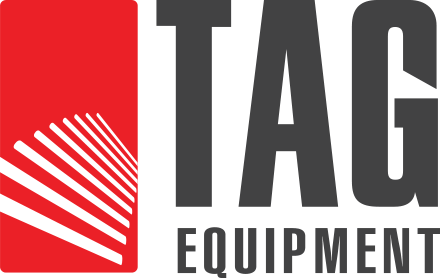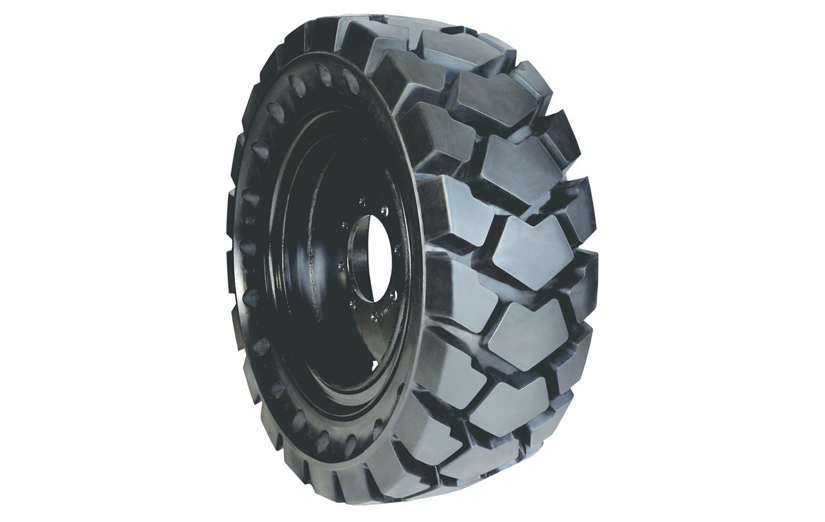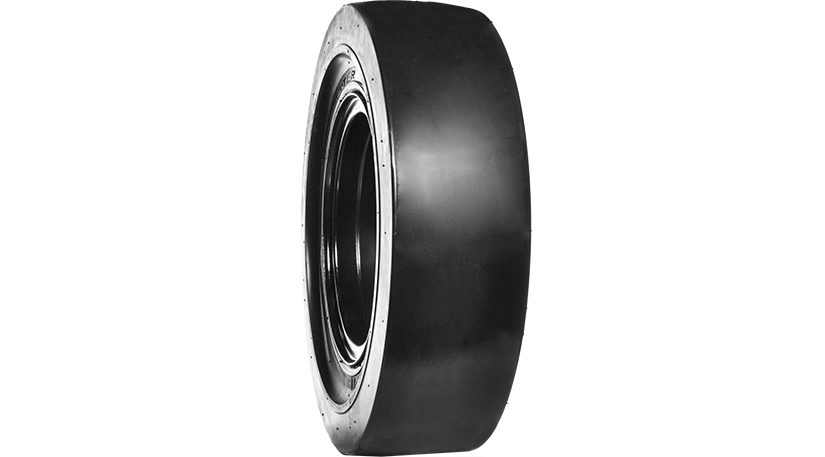Solid tires are flat-proof, wear-resistant, highly resilient, and boast a longer service life than their pneumatic counterparts. These tires find widespread use in various applications, including agriculture, construction, and demolition. Understanding how they are secured to the rim is crucial for any compact equipment owner or operator.
Skid Steer Flat-Proof Tire Mounts
There are three types of solid tire mounts: press-on, rim-bonded and segmented. The choice between them plays a crucial role in their longevity and overall performance. Here is a comparison to help you understand them better and make informed decisions for your compact equipment:
Press-On Skid Steer Tires
Press-on tires are known for their robustness and resilience in demanding work environments. As the name indicates, they are pressed onto the rim by stretching the rubber over it. Friction helps hold the rubber to the rim. The unique feature of these tires is the absence of air, making them a preferred choice for skid steer owners looking to minimize downtime.
Pros of Press-On Tires
- Affordability: These tires are more cost-effective compared to the rim-bonded ones, making them an ideal choice if you are looking for economical skid steer tires.
- Puncture Resistance: Their flat-proof nature, achieved by eliminating an air-filled chamber, significantly extends their lifespan.
- Stability: The sturdy structure provides the skid steer operators unparalleled stability, a critical factor for precision tasks in construction and landscaping.
Cons of Press-On Tires
- Limited Shock Absorption: Although they offer durability, press-on tires may provide less shock absorption than their air-filled counterparts, potentially affecting operator comfort during prolonged use.
Rim-Bonded Tires
These tires feature a unique design where they are chemically bonded to the rim, ensuring a secure and stable connection. This method reduces the chances of slippage or separation during heavy-duty operations.
Pros of Rim-Bonded Tires
- Enhanced Stability: The chemical bonding process guarantees a secure fit, reducing the likelihood of the tire shifting on the rims during demanding applications.
- Consistent Performance: Rim-bonded tires offer better traction and are known for delivering consistent performance and maintaining optimal traction over extended periods.
Cons of Rim-Bonded Tires
- Upfront Cost: Rim-bonded tires can be expensive because, in case of a replacement, you must remove them entirely.
- Challenging Replacement: The chemical bond that ensures stability during operation can pose challenges during replacement, potentially requiring professional assistance.
Segmented Tires
Segmented tires stand out with their multi-piece design, making them a popular choice for skid steer owners seeking versatility across various work conditions.
Pros of Segmented Tires
- Flexibility: The segmented design improves shock absorption, enhancing operator comfort during operation.
- Cost-Effective Maintenance: You can replace the individual segments independently, offering a cost-effective ongoing maintenance solution. In addition, they do not require specialized equipment for retreading the tire.
Cons of Segmented Tires
- Debris Accumulation: The segmented design, while advantageous, may allow debris to accumulate between segments, necessitating periodic cleaning for optimal performance.
Which is the Best Mount Option for a Skid Steer?
The type of mount you choose for your compact equipment will depend on the following four factors:
- Your budget
- The severity of the application
- The type of terrain
- Maintenance and operating costs
Upgrade Your Skid Steer Tires with Us for High Performance
Elevate your skid steer’s performance with Tag Equipment’s comprehensive tire selection, featuring press-on, rim-bonded, and segmented options. Call us at 416-716-5850 if you have any questions about our solid tires or no air skid steer tires. You could also fill out our contact form for more information.
Also Read: HOW SOLID FLAT-PROOF SKID STEER TIRES CAN HELP YOU SAVE MONEY


